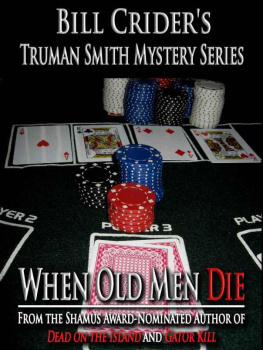
Published by The History Press
Charleston, SC 29403
www.historypress.net
Copyright 2013 by Beverly Crider
All rights reserved
Cover image courtesy of Tim Hollis.
First published 2013
e-book edition 2013
Manufactured in the United States
ISBN 978.1.62584.056.1
Library of Congress CIP data applied for.
print edition ISBN 978.1.60949.988.4
Notice: The information in this book is true and complete to the best of our knowledge. It is offered without guarantee on the part of the author or The History Press. The author and The History Press disclaim all liability in connection with the use of this book.
All rights reserved. No part of this book may be reproduced or transmitted in any form whatsoever without prior written permission from the publisher except in the case of brief quotations embodied in critical articles and reviews.
CONTENTS
FOREWORD
Lately, it seems that just about any book concerning Birminghams pop culture history has either an introduction or a foreword by meso yes, folks, here I am once again to usher you into the weird, wonderful, sometimes murky and always fascinating world of Lost Birmingham.
Just what does lost Birmingham mean, you ask? Well, as you will find when scanning the twenty different topics covered in this book, it can mean many different things. Some of the sites covered herein truly arelike Huckleberry Hounds girlfriend, Clementinelost and gone forever. Those would include the OBrien Opera House, the Caldwell Hotel and, of course, the late, lamented Terminal Station. (As an aside, I was asked not long ago how the people of Birmingham could have allowed the demolition of such a magnificent structure. I explained that in 1969 there wasnt really the sense of historic preservation that exists today. In fact, it was not until the mid-1980s, when Cecil Whitmires campaign to save the Alabama Theatre went into full swing, that the fate of the Terminal Station began to be thrown up over and over again as a specter of what could happen. It worked for the Alabama, and since then, the Terminal Station has become the ghostly poster child for any number of preservation efforts.)
Getting back to the subject at hand, a site does not actually have to be extinct to be considered lost in this book. Take the case of the landmark detailed in the ninth chapter, the Thomas Jefferson Hotel (aka the Cabana, if you are slightly younger). That hulking edifice is very much still with us, but in its current condition, it is in even worse shape than the Terminal Station was when the wrecking ball began to swing. Ditto for the Quinlan Castle, that mysterious-looking relic on the slope of Red Mountain that looks like it was transported to Birmingham from the world of King Arthur (or Harry Potter, again, depending on how old you are). Although the Quinlan is presently an empty shell, it came awfully close to not even existing in that form, so there is reason to celebrate even with that.
The Lyric Theatre, catty-cornered across Third Avenue North from the Alabama Theatre, falls somewhat between the condition of the Thomas Jefferson and Quinlan Castle. While suffering from years of neglecteven its 1970s and 1980s days as a porno house did not help it keep in shapethe Lyric is far from being empty. I remember when Cecil Whitmire and his loyal minions first acquired the Lyric, and he took me inside. Broken seats were everywhere, but Cecil was ecstatic because they had just removed part of the ugly drop ceiling in the former lobby areawhich had most recently served as a beauty supply storeand the original 1914 ceiling work and light fixtures had been discovered still intact. Any building with that much resolve to hang in there deserves all the loving attention it can get.
And so, as I usually do, I now leave you in the capable hands of Beverly Crider, who will be your tour guide for the rest of the way. Ill be lurking in the back of the group, though, looking forward to exploring these lost and not-so-lost sites along with the rest of you. Onward, brave souls!
Tim Hollis
www.birminghamrewound.com
PREFACE
Time has no mercy. The wreckers battering ball is always eager. Fire is indiscriminate. And together they have taken a sad and heavy toll of structures which were once social landmarks, many of which grew up with the city and some of which are etched forever on the image of a younger, vanished Birmingham.
Birmingham News, December 19, 1971
I grew up in Birmingham, yet I missed out on much of our history. Im not old enough to have seen the Thomas Jefferson Hotel in its glory or viewed a play at the Lyric Theatre. I would have loved to have met Miss Fancy in Avondale Park, but yet again, I hadnt been born yet. I was just a small child when the Terminal Building met the wrecking ball, and while I did see movies in the Alabama Theatre as a child, I would have loved to have seen it back in the day!
To be honest with you, I took for granted the landmarks I did see growing up. I visited the top of Vulcan one time and just accepted that the largest cast-iron statue in the world would always be there to greet me atop Red Mountain. Amazingly, I never even noticed the zeppelin mooring station on top of what by then was called the Cabana Hotel. When I worked downtown, I must have walked or driven past the buildings of Birminghams original skyline hundreds of times, yet didnt acknowledge their contributions to our citys development.
The Heaviest Corner on Earth? Never heard of it. Hillman Hospital? Sure, I knew that it was part of the University of Alabama at Birmingham (UAB) Medical Center. I even worked in the media relations office at the university, yet I never really thought about what Birmingham was likewhat the skyline looked like when that little building, by todays standards, stood there alone without the massive medical center surrounding it. I never really thought about the important role it played in the health and well-being of our Founding Fathers (and Mothers).
Needless to say, Ive learned more about the Magic City while writing this book than I ever did while growing up in the city. Its given me a greater love and respect for Birmingham and made me extremely sad about the loss of so many beautiful landmarksmany of which I never had the opportunity to see.
Ive also got to say a big thank you to my husband, Kyle, who started me on this journey of exploration. Ive always been interested in history to some degree, but it was Kyle who introduced me to the strange side of history. Together, we started a Facebook page called Strange Alabama a few years ago. The page focuses on the states curious and forgotten lore, interesting facts about Alabama history, cool and unusual places to visit, regional ghost stories and more.
The Facebook page led to writing a blog on Alabamas leading news site, AL.com. That, in turn, led to my introduction to Chad Rhoad at The History Press. And the rest, as they sayno, I wont go there.
LAKEVIEW PARK
Site of the First Alabama-Auburn Football Game
Situated in the center of the most fashionable suburb of Birmingham, Lakeview was the greatest and crowning development of aristocracy of the Highlands.
Lakeview Hotel, together with the magnificent park and grounds, was known far and wide for its hospitality.
Historic Alabama Hotels & Resorts
On January 26, 1871, a group of businessmen gathered at the office of Josiah Morris and Company in Montgomery to officially organize the Elyton Land Company. There, the board of directors adopted bylaws, among which was the following: The city to be built by the Elyton Land Company, near Elyton, in the County of Jefferson, State of Alabama, shall be called Birmingham.
Next page
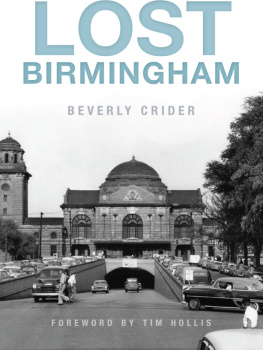
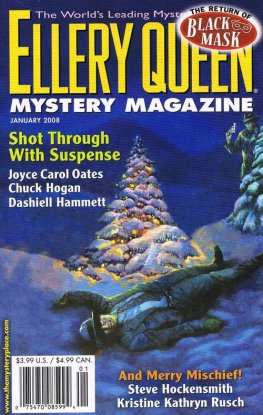

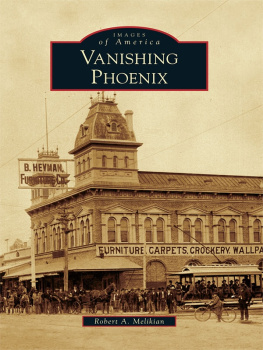
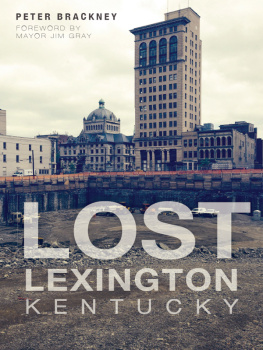
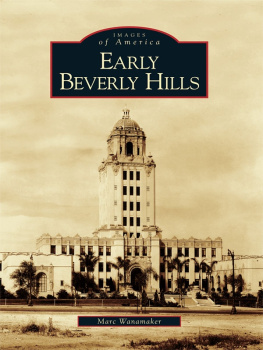
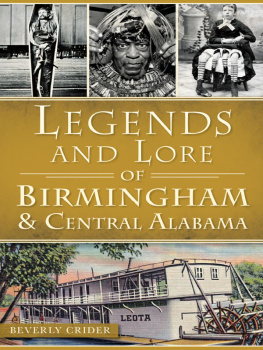
![Beverly M Lewis] - The Beverly Lewis Amish Heritage Cookbook](/uploads/posts/book/96304/thumbs/beverly-m-lewis-the-beverly-lewis-amish-heritage.jpg)
